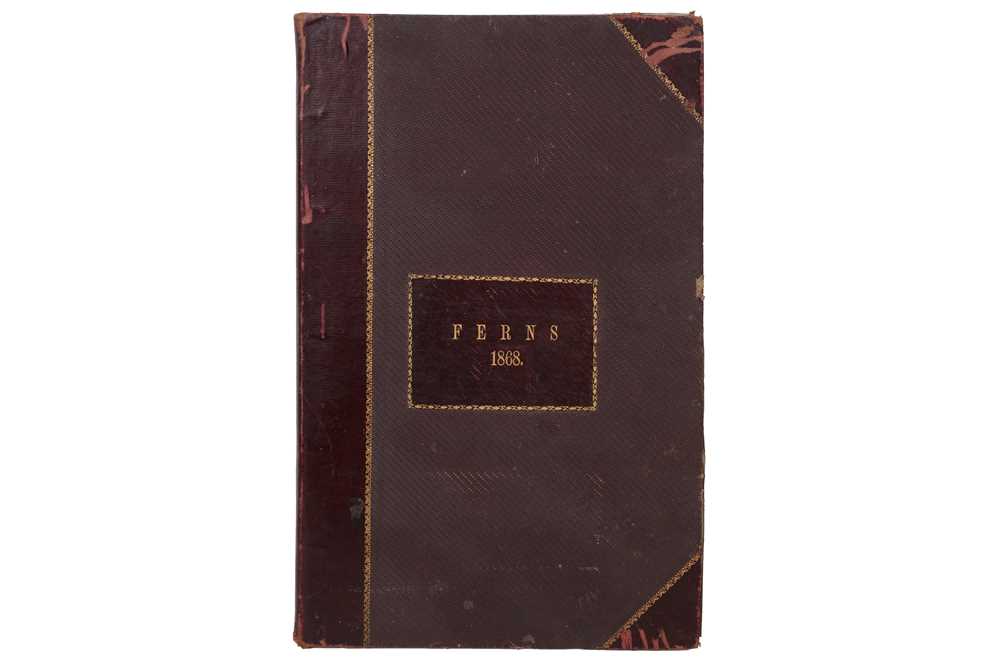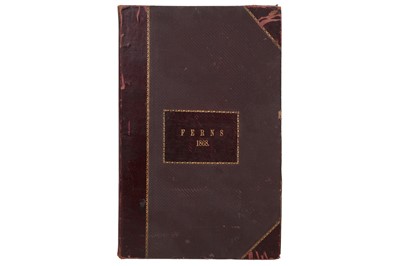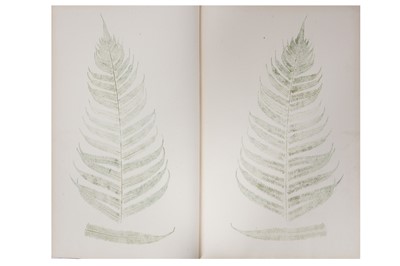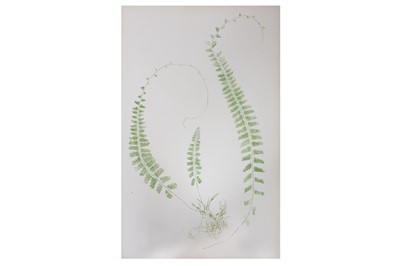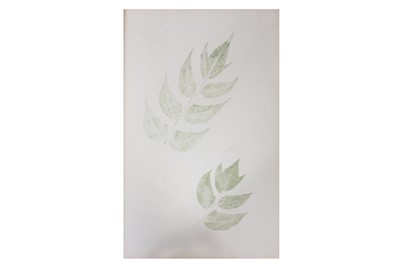30th Oct, 2020 11:00
From the Curious to the Extraordinary
AN UNUSUAL AND POSSIBLY UNIQUE VICTORIAN PTERIDOMANIA NATURE PRINTING ALBUM
AN UNUSUAL AND POSSIBLY UNIQUE VICTORIAN PTERIDOMANIA ALBUM OF FERN IMPRESSIONS dated 1868, a maroon half leather bound folio album containing prints / impressions of ferns in pale green ink / facsimile, possibly chromolithography prints from life, each pair of leaves bares indentations to the paper on one or both sides as if a specimen has been pressed between them, the pages and bindings bare no printers marks or plate marks, some of the pages have handwritten annotations with scientific names, this folio may possibly be a unique work of the bound experiments of an amateur botanist or printmaker, 44cm high, 29cm wide
Pteridomania or 'Fern-Fever' was a Victorian craze for ferns which lasted from the 1840s until past the 1880s. The decorative arts of the period presented the fern motif in pottery, glass, metal, textiles, wood, printed paper, and sculpture.
The 19th century ‘Nature Printing’ process was used most successfully by two men between 1853 & 1860. The first was Alios Auer (Austrian 1813- 1869) with invention of the process, Naturselbstdruck, published in 'The Discovery of the Natural Printing Process: an Invention' Vienna 1853. Auer's method can only be used with objects with tolerably flat surfaces, such as dried and pressed plants, embroidery and lace, and a few animals. The object is placed between a plate of steel and another of lead, both of which are smooth, and polished. They are then drawn through a pair of rollers under considerable pressure. When the plates are separated, it is found that a perfect impression of the object has been made in the leaden plate. This may be used directly as an engraved plate, but only if a very few impressions are wanted, for it is too soft to resist the action of printing presses for practical purposes. For larger numbers of images, a facsimile to be used as the printing plate is made in copper by the electrotype process. The plate is then hand coloured and transferred to the final print. The second was Henry Bradbury (English 1829-1860) who immediately used Auer's 'nature printing' process to publish work of his own. These included two major botanical works; 'The Ferns of Great Britain and Ireland' by Moore, Thomas (1857) and 'The Nature-Printed British Sea-Weeds' by W.G. Johnstone & A. Croall (1859-60).
In 1867 Henry C. Baildon patented a process using chromolithography to try to capture the tints of the original plants. But public reaction to his work was disappointing, the opacity of the inks made the prints appear less than life like illustration. He published the work 'Nature-Printed Ferns' in 1869.
Sold for £938
Includes Buyer's Premium
Do you have an item similar to the item above? If so please click the link below to submit a free online valuation request through our website.
